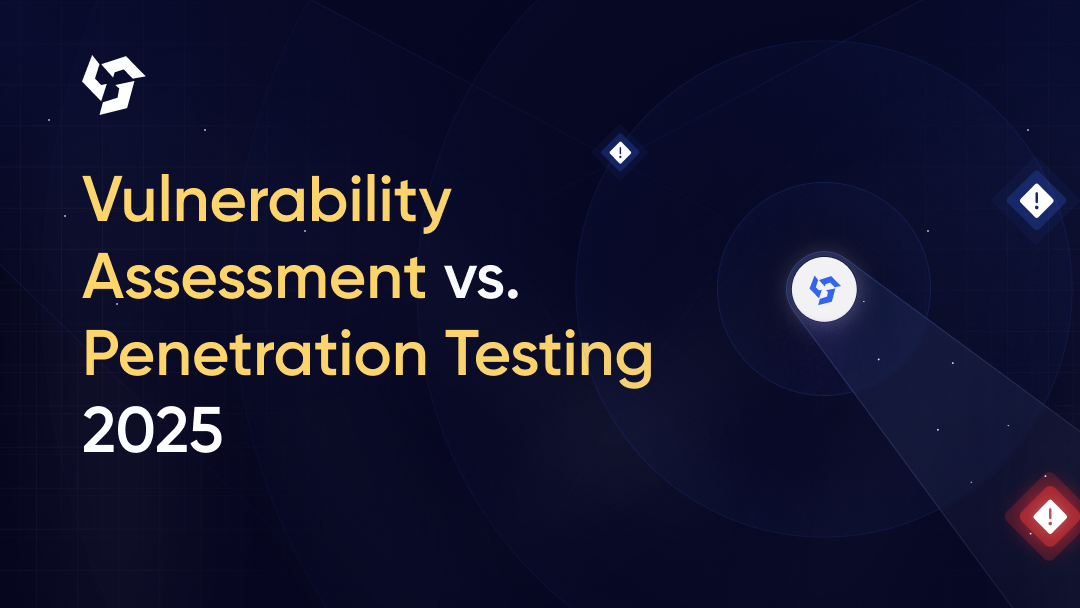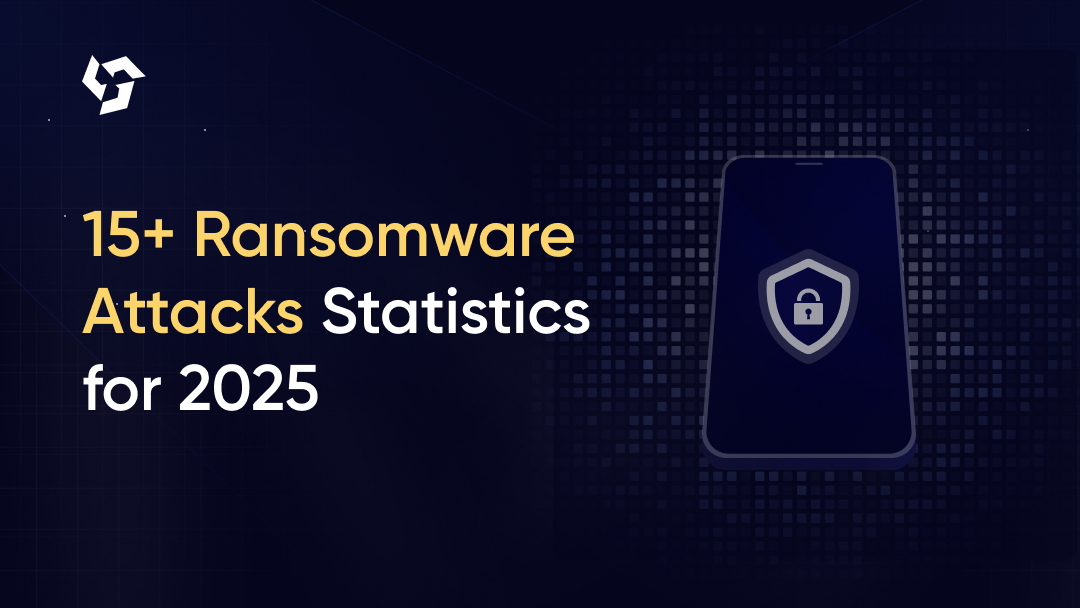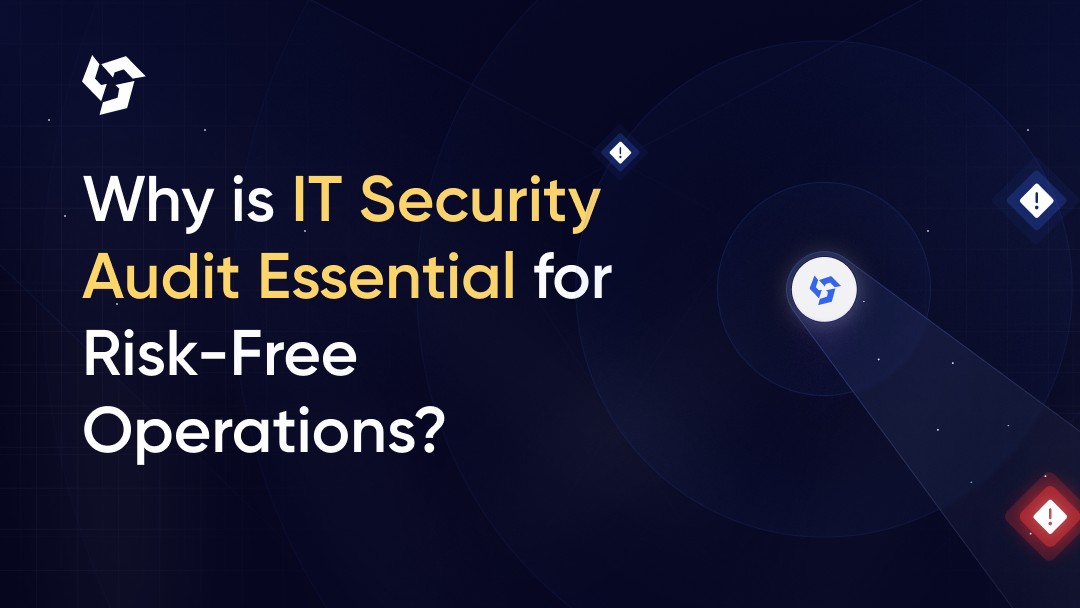Cyber risks for finance have become a persistent threat. Whether it's a bank, fintech platform, insurer, or investment firm, every organization now faces the risk of targeted breaches aimed at disrupting operations or accessing sensitive financial data.
These risks aren’t just technical concerns, they affect business continuity, customer trust, and regulatory compliance. A single overlooked vulnerability can result in major financial loss, with the average cost of a data breach rising to $4.88 million in 2024, according to IBM’s Cost of a Data Breach report.
Add in reputational damage or penalties from regulators, and you’ll have a mess on your hands in no time. That’s why pentesting is essential for financial institutions. It helps uncover critical weaknesses across systems, applications, and infrastructure, giving teams the insight they need to reduce risk exposure and protect what matters most.
tl;dr: Cyber risk in finance is real, growing, and no longer just an IT concern. Financial institutions need security testing that reflects how real attackers operate, across APIs, mobile apps, cloud setups, and payment flows. Penetration testing helps identify business-critical flaws, reduce risk exposure, and stay compliant with evolving regulations. AppSecure partners with financial organizations to deliver deep, manual-first assessments aligned with operational realities.
Understanding cyber risks for finance organizations
Let’s now break down how cyber risks for finance build up and where exposure often starts within the environment.
- Data sensitivity and breach potential
Financial systems manage high-value data: customer PII, payment details, account credentials, and transaction records. Even a minor misconfiguration or exposed endpoint can lead to data leakage, fraud, or regulatory non-compliance.
Attackers actively target this data for financial gain, making financial platforms a constant focus of cybercrime.
- Operational complexity across hybrid infrastructure
From core banking systems to cloud-native fintech stacks, financial institutions often run on hybrid environments with many moving parts. These include legacy applications, third-party APIs, mobile channels, and internal networks.
Weak segmentation, misconfigured access controls, or outdated components increase the risk of lateral movement and privilege escalation.
- Identity and access risks in distributed environments
With thousands of users, employees, and third-party vendors interacting with systems, improper identity and access management (IAM) is a frequent issue.
Dormant accounts, weak MFA policies, and excessive privileges can go unnoticed, leaving attackers with easy paths to critical systems.
- Regulatory and reputational exposure
Financial institutions are subject to intense regulatory oversight, from RBI and SEBI to global frameworks like PCI DSS and GDPR.
A single cyber incident can trigger investigations, fines, and mandated disclosures. Beyond penalties, reputational harm often impacts market value and long-term customer trust.
Common cyber risks for finance companies
Once exposure points are understood, the next step is knowing how attackers exploit them. The financial sector remains a top target due to its transaction volume, user base, and infrastructure complexity.
Here are the most impactful cyber risks for finance:
- Ransomware with data exfiltration
Modern ransomware campaigns go beyond system lockouts. Threat actors often gain initial access through phishing or vulnerable RDP endpoints, move laterally to discover valuable data, then exfiltrate it before triggering encryption.
The dual-threat model, encryption plus extortion, forces financial firms to choose between service disruption or public disclosure of sensitive records.
- Credential stuffing and session hijacking
Attackers use automated tools to test username-password combinations harvested from prior breaches. If multi-factor authentication (MFA) is weak or inconsistently applied, successful logins enable account takeover.
Session hijacking via stolen tokens or replay attacks is also used to bypass credentials entirely, especially in API-driven services.
- API exploitation and mobile attack vectors
APIs in digital banking apps expose business logic that, if not properly secured, can be abused for unauthorized fund transfers, information leakage, or enumeration of user data.
Common issues include broken object-level authorization (BOLA), lack of rate limiting, and weak token validation. Mobile apps often fail to validate SSL certificates or store sensitive data insecurely on devices.
- Phishing and business email compromise (BEC)
Attackers craft emails that mimic vendors or executives, luring users into clicking malicious links or modifying payment details.
Advanced BEC operations may monitor inboxes for weeks before initiating fraud, using real email threads and insider tone to evade detection. DMARC/SPF misconfigurations and lack of secondary approvals make these attacks easier to execute.
- Insider misuse and privilege escalation
Not all threats come from outside. Employees with excessive privileges may abuse access to alter financial records or download bulk data. Privilege escalation can also occur when roles aren’t tightly scoped, allowing one compromised account to traverse into higher-sensitivity environments.
Absence of user behavior analytics (UBA) or regular role reviews increases dwell time for insider threats.
- Misconfigured cloud assets and supply chain flaws
Unsecured S3 buckets, exposed admin panels, or improperly scoped IAM roles in AWS, Azure, or GCP environments are frequent points of entry.
Threat actors also look for overlooked third-party integrations, like unsecured analytics tools, payment processors, or support plugins, to move laterally into production systems. Limited visibility into vendor environments makes these threats difficult to manage reactively.
Business impact of cyber incidents in the financial sector
Understanding cyber risks for finance is only half the equation. For financial institutions, the true cost of cyber incidents lies in how they affect operations, compliance, customer trust, and long-term business value.
Here’s how those impacts typically unfold:
- Downtime and service disruption
Cyberattacks like ransomware or DDoS can stall core banking platforms, halt payment processing, or lock users out of accounts. Even a short disruption affects transaction volumes, damages SLAs, and can trigger breach-of-service clauses in partner agreements.
- Regulatory non-compliance and legal penalties
Incidents often expose gaps in controls required under RBI, SEBI, PCI DSS, or GDPR. This can lead to formal investigations, show-cause notices, and steep financial penalties. Failing to disclose breaches on time or lacking forensic evidence only amplifies the legal risk.
- Customer attrition and brand erosion
Security breaches, especially those involving PII or transaction data—can cause immediate customer backlash. Financial clients are highly sensitive to perceived lapses in trust, and recovery often requires significant investments in communication, incentives, and brand repair.
- Valuation impact and investor skepticism
Breach disclosure during funding or M&A negotiations can stall deals or reduce valuations. Investors now expect evidence of proactive security controls and will flag repeated incidents as signs of operational risk.
- Cyber insurance friction and rising premiums
Following a breach, insurers may reassess risk posture. Lack of endpoint monitoring, missing MFA, or outdated testing practices can lead to premium hikes, coverage exclusions, or denial of claims, leaving the institution to absorb losses directly.
Regulatory pressure and compliance requirements for the finance sector
As outlined earlier, financial institutions already operate under significant regulatory scrutiny, but today’s environment demands more than policy on paper. Here’s how evolving frameworks now require demonstrable, tested cybersecurity practices across critical areas:
- RBI cybersecurity framework
India’s central bank mandates a comprehensive cybersecurity policy for scheduled banks, NBFCs, and payment system operators.
Requirements include continuous risk assessments, secure configuration baselines, real-time threat monitoring, and board-reviewed incident response plans. Non-compliance can result in supervisory action or operational restrictions.
- ISO 27001, SOC 2, and PCI DSS alignment
Global financial entities must show adherence to established information security frameworks. ISO 27001 emphasizes structured risk management and control implementation, SOC 2 assesses controls relevant to data privacy and availability, and PCI DSS governs payment card infrastructure.
Regulatory audits often demand mapped evidence against these standards.
- SEBI guidelines for market participants
SEBI’s cybersecurity circular outlines security obligations for stockbrokers, mutual funds, depositories, and RTAs. It mandates security testing, log retention, timely breach reporting, and segregation of critical systems. For asset managers, cyber governance is now a factor in operational risk grading.
- GDPR and global privacy mandates
Cross-border data operations subject financial entities to the GDPR, India's DPDP Act, and other regional privacy laws. These require proof of consent handling, encryption of sensitive data, breach notification within tight timelines, and vendor compliance tracking.
- Governance expectations from boards and investors
Beyond regulators, institutional investors and board committees now demand cybersecurity posture updates, pentest evidence, and breach readiness metrics. Security maturity increasingly influences investment decisions, ESG scores, and quarterly disclosures, making compliance a boardroom priority.
Role of penetration testing in managing cyber risks for finance
As regulatory demands grow and threat actors evolve, financial institutions need more than static controls, they need continuous validation of how secure their environments truly are.
Penetration testing provides that assurance by exposing weaknesses before attackers do, offering both technical and business-level insights into real-world risk.
Let’s look at how pentesting strengthens core areas of financial cybersecurity:
- Adversary simulation across live systems
Penetration testing goes beyond surface-level scans by emulating real-world attacker behavior. This includes exploiting chained vulnerabilities, testing for lateral movement, privilege escalation, and data exfiltration, allowing teams to see how an attacker could pivot across environments.
- Application-layer testing for financial platforms
Custom web and mobile applications, APIs, and transaction engines are tested for logic flaws, broken access controls, insecure session handling, and injection vectors. Testing focuses on assets that directly process customer data, funds, or authentication flows.
- Infrastructure and cloud configuration validation
Both on-prem and cloud environments are reviewed for weak IAM roles, exposed management ports, misconfigured firewalls, insecure storage, and unmonitored endpoints. These misconfigurations often lead to silent compromise or data leakage if left unchecked.
- Red team assessments to stress-test response readiness
Simulated advanced persistent threats (APT) are used to test the efficacy of detection and response controls. Red teams assess how well SOCs, SIEMs, and escalation protocols hold up under stealthy, multi-stage attack scenarios.
- Translating findings into risk-aligned decisions
Effective penetration tests map vulnerabilities to business and compliance impact, enabling leadership to prioritize based on regulatory exposure, data sensitivity, and likelihood of exploitation. This makes pentesting a vital input for both security and governance functions.
AppSecure’s experience in managing cyber risks for finance organizations
AppSecure supports organizations across banking, fintech, and lending by aligning security assessments with real-world business logic, operational workflows, and evolving regulatory expectations.
Here’s how our penetration testing methodology is structured to address the specific risks these environments present:
- Testing driven by business logic and threat modeling
Rather than relying solely on automated scans, AppSecure crafts custom testing plans based on how each financial system works, be it a payment gateway, wallet, or lending platform.
By modeling attacker goals and expected flow misuse, the team uncovers logic flaws and authorization bypasses that impact business integrity.
- Manual-first assessments of APIs and payment workflows
AppSecure emphasizes deep manual analysis to find vulnerabilities like broken object-level access control, insecure deserialization, weak rate limiting, and authentication bypasses.
This approach targets APIs, mobile apps, and object-level logic that scanners often miss.
- Safe testing in live, sensitive environments
Recognizing the need for uninterrupted services, AppSecure uses production-safe testing methods, such as scoped credentials, off-peak testing, and read-only payloads, to avoid disrupting transactions or customer-facing systems.
- Audit-ready, risk-prioritized reporting
Penetration testing reports are built for multiple audiences: technical teams receive detailed PoCs and remediation steps, while compliance and executive stakeholders get risk-based summaries and regulatory impact matrixes.
This format supports PCI-DSS, RBI, and ISO 27001 audit readiness.
Best practices for managing cyber risks in finance
As threat actors evolve, financial institutions need a layered defense strategy that blends proactive testing, continuous visibility, and security-by-design principles.
Below are key practices that help reduce real-world risk across hybrid financial environments:
- Targeted penetration testing and red teaming
Regular pentests focused on business logic, API flows, and customer data pathways help uncover exploitable flaws before threat actors do.
Red teaming exercises simulate persistent adversaries, testing how far an attacker could pivot, escalate privileges, or bypass detection across core banking systems or digital platforms.
- Centralized monitoring and log correlation
Deploying SIEM and EDR/XDR solutions enables real-time detection of anomalous behavior, such as privilege misuse, lateral movement, or unusual API usage.
Correlating logs from cloud workloads, endpoints, and network devices improves visibility and supports faster containment.
- Resilience against phishing and social engineering
Targeted email campaigns and deepfake-enabled attacks require institutions to run advanced phishing simulations and executive-targeted training.
Security awareness programs should include role-based content, threat modeling, and real incident walkthroughs for better retention.
- Third-party and supply chain risk governance
Vendor risk assessments must go beyond surface-level questionnaires. Reviewing SBOMs, validating encryption standards, testing third-party integrations, and ensuring continuous access review of vendor accounts are essential steps to control indirect attack vectors.
- IAM controls and zero-trust policy enforcement
Enforce strong multi-factor authentication, periodic access reviews, and least-privilege configurations across all layers.
Transitioning toward a zero-trust architecture ensures that authentication and authorization are enforced continuously based on device health, user behavior, and resource sensitivity, not just initial login.
Stay ahead of cyber risks in finance
As financial institutions become more digital, the surface area for cyber threats continues to grow. This isn't just a technology problem, it's a business risk that affects trust, compliance, and long-term performance.
That’s why security testing needs to be proactive and aligned with how financial systems actually work. A well-executed penetration test helps uncover real risks, across APIs, payment platforms, cloud setups, and internal networks, before attackers can exploit them. It's a key step in building a stronger security posture and avoiding unexpected disruptions.
AppSecure supports financial organizations with focused, manual-led assessments tailored to their operations. Whether you're a fintech, NBFC, or digital-first bank, our approach helps your teams gain clarity, meet compliance goals, and reduce cyber risk in a measurable way.
To learn more or schedule a confidential engagement, connect with AppSecure’s security specialists today.
FAQs
- What are the main cyber risks in the financial sector?
Banks and fintechs face threats like ransomware, phishing, insider misuse, API attacks, and cloud misconfigurations.
- How does penetration testing reduce cyber risk in banking?
It helps find and fix security gaps before attackers can exploit them, across apps, infrastructure, and access controls.
- Is cybersecurity testing mandatory for financial institutions?
Yes, most regulators require regular testing to meet compliance standards like RBI, PCI DSS, and SEBI.
- What types of threats target fintech and mobile banking apps?
Common issues include API abuse, weak login security, data leaks, and mobile app flaws.
- How can AppSecure help financial companies improve their cybersecurity?
AppSecure runs targeted security tests that reveal critical issues in real-world financial systems, helping teams fix them fast and meet compliance.

Ankit Pahuja is a B2B SaaS marketing expert with deep specialization in cybersecurity. He makes complex topics like EDR, XDR, MDR, and Cloud Security accessible and discoverable through strategic content and smart distribution. A frequent contributor to industry blogs and panels, Ankit is known for turning technical depth into clear, actionable insights. Outside of work, he explores emerging security trends and mentors aspiring marketers in the cybersecurity space.


.png)

























.png)
.png)

.png)
.png)
.png)
.png)
.png)
.png)

.png)
.png)



.png)




.png)
.png)
.png)
.png)

.png)
.png)

.png)
.png)
.png)
.png)
.png)

.png)









.webp)





.webp)


.webp)

.webp)



.webp)
.webp)
.webp)
.webp)













.webp)
